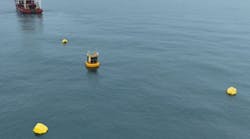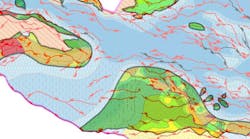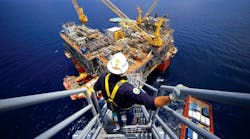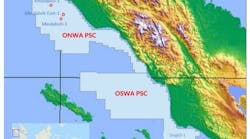Editor's note: This story first appeared in the November-December 2022 issue of Offshore magazine's first annual Offshore Oil and Gas Executive Perspectives Special Report.
By Adriana Citlali Ramírez, TGS
The energy market conditions, particularly for oil and gas, have always been a moving target. The move to net zero and the UN’s Sustainable Development Goals have had an enormous impact, motivating the industry to expand faster into more carbon capture and sequestration (CCS) projects, geothermal exploration and development, wind energy, solar energy, and mining—to name high-activity areas related to geosciences.
This fact, combined with the pandemic, has reshaped business and technology needs, economic robustness to new norms and shortened the length of process cycles.
The industry’s upstream technology and expertise is well suited to tackle the geophysics-related challenges in the path to net zero. However, it is not only about technology availability or expertise that can be either directly used or adapted into the energy transition space. It is about identifying the technology fit for the purpose, stage and economics of the project, while complying with the regulatory framework and having near-zero environmental impact.
In CCS, for example, the transfer of technology and expertise development began in 1996 with CO2 injection at the first CCS site, Sleipner on the Norwegian Continental Shelf. The monitoring technology to understand the flow and evolution of the reservoir with injection over time followed the technology trends used for evaluating the life of an oil and gas reservoir, relying mainly on time-lapse seismic. Time-lapse seismic surveys are, in general, repeated seismic experiments whose differences provide information about the evolution of a reservoir (and fluid motion within) and its surroundings, particularly its overburden.
The cost of each time-lapse survey can range from hundreds of thousands up to millions of dollars. The interval within surveys ranges from months to a few years over the lifetime of a producing field up to decommissioning. For a CCS project like Sleipner being connected to a producing field, the inherent economics from hydrocarbon production permit this monitoring path. Seismic is often prohibitively expensive for independent projects not associated to a profitable operation. Technology emerged in recent years includes real-time monitoring at the wellbore, with measurements that can be transmitted remotely and analyzed almost continuously with physics-based methods and/or artificial intelligence.
Regulations
Over the years, other projects have developed around the globe gathering similar or complementary information. These datasets, their analysis and the industry’s learnings are providing the information that the authorities need to evaluate and develop the regulatory framework that will further enable and develop a sustainable CCS business critical to achieving net zero. The regulatory framework and industry standards are under maturation, different technological solutions are still being proposed and their economic viability scrutinized.
After all, a CCS field cannot be decommissioned like an oil and gas field. Most current regulatory frameworks require that the operator of a CCS project monitors the reservoir and CO2 containment for a minimum of 20 years after last injection, before transferring the liability to the authority. The liability of decommissioning a hydrocarbon field is high, but finite and well regulated. The liability of monitoring a CCS field has a much longer lifetime, and eventually this cost will go to taxpayers. Thus, there are incentives to find the best combination of regulation, timelines and technology.
Deepsea mining
Another example where the industry’s geo-technology is being thoroughly evaluated is in relation to the enormous mineral requirements that the energy transition is imposing. Deepsea mining is a niche, where geosciences can make a huge contribution. The combination of technology, high safety, environmental standards and appropriate regulation by national entities in line with the mandates from the International Seabed Authority will potentially enable the industry to access these riches sustainably and with minimum environmental impact.
TGS has participated in two scientific cruises on deepsea mining exploration, AM20-Lab in the Atlantic Margin and MOHN22 with the Atlab-3 consortium in the Norwegian Arctic. The latter is a multi-faceted consortium capitalizing on the industry’s knowledge of exploring and derisking complex, remote geology. It consists of seven geophysical companies, two operators, marine biologists, a Norwegian University and representatives from the Norwegian government.
The cruise’s objective is to evaluate seabed massive sulfides, which typically occur on mid-oceanic ridges. The cost of operation is large and prior data are limited; therefore, it was decided to measure everything that could be mobilized within the budget, time and environmental constraints. The cruise finished in early October, bringing back measurements to test seafloor nodular CSEM, MT and seismic; towed 2D seismic and towed CSEM. In addition, measurements from the deepsea environment were collected for marine biologists, including O2, CO2, Ph, salinity, methane and water temperature. The goal is that the data and analysis will find the optimal technology for regional deepsea mining exploration and will provide the authorities with enough information to enable a new business with minimum environmental impact that supplies the minerals needed for a successful energy transition.
At the end of 2022, energy security is of utmost importance. In a world in desperate need of reaching its net-zero targets with sustainable energy, can we afford to live without the geoscience expertise that the oil and gas industry offers?
About the author: Adriana Citlali Ramírez is TGS' chief geophysicist and technology adviser.





